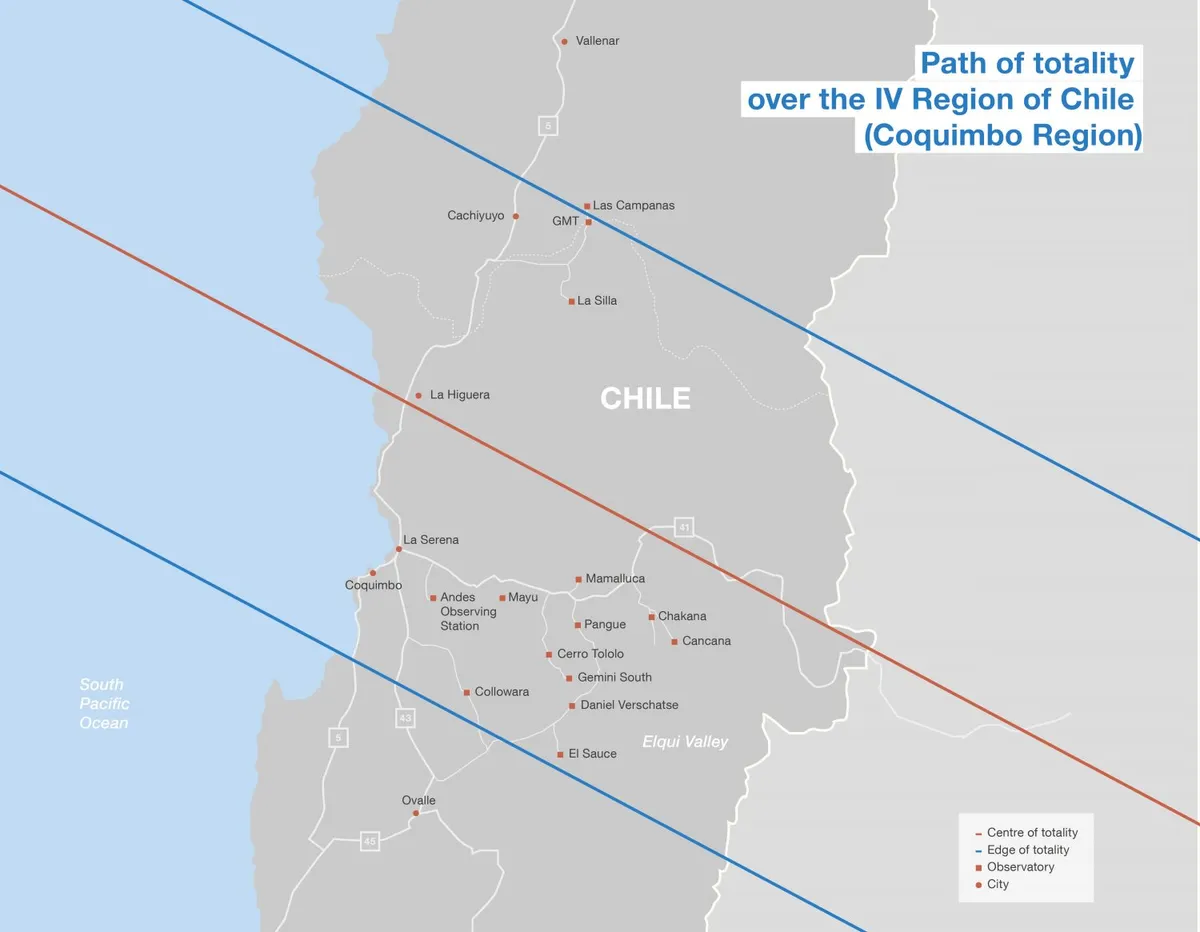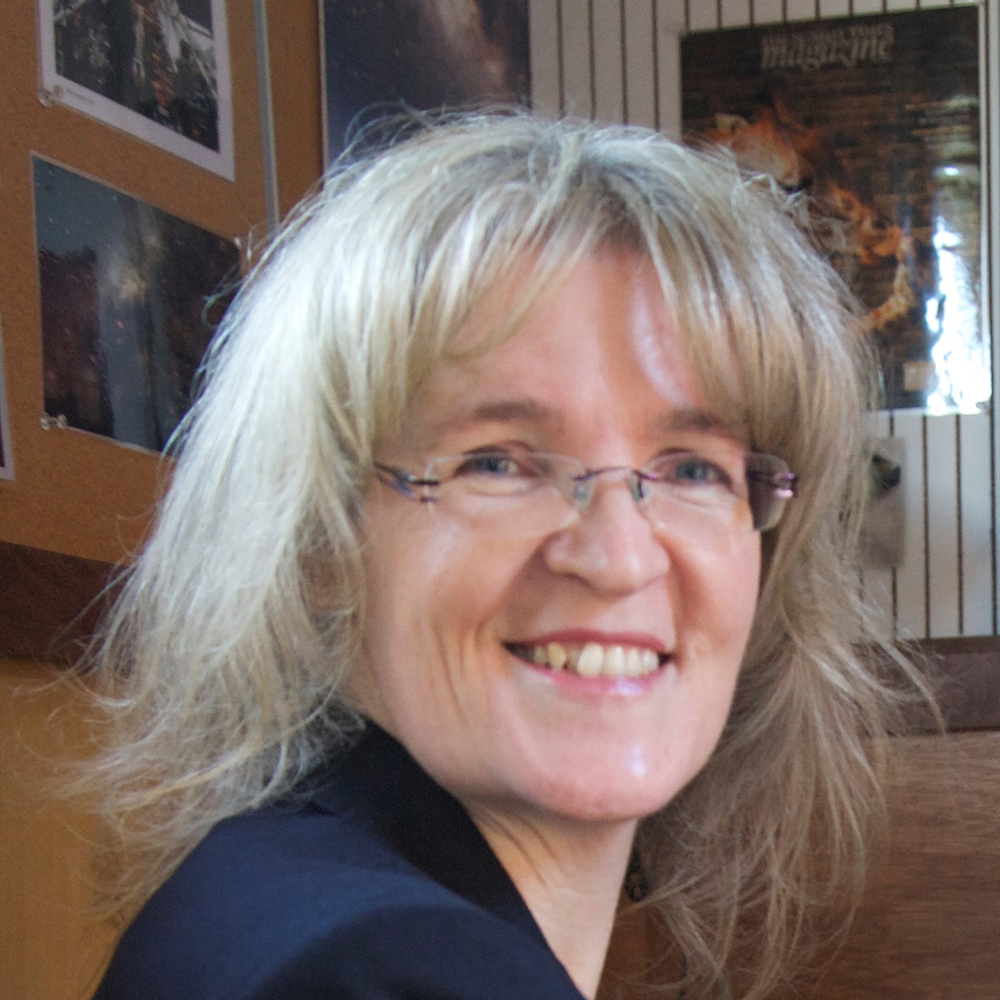There’s a total solar eclipse occurring on 2 July 2019 that will be visible from the Pacific and South America.To experience the full eclipse - known as 'totality' - you must be within the umbra, the Moon’s full shadow, where it strikes Earth (for more info on the science of eclipses, scroll to the bottom of this article).
This dark corridor, or ‘path of totality’, is typically 160km wide, thousands of miles long and, since Earth and the Moon are in motion, tracks west to east across the planet.
This year it will start at 18:02 UT in the Pacific, 1,900km east of New Zealand’s North Island, the umbral shadow making landfall on Oeno Island, an uninhabited coral atoll, at 18:24 UT.Totality here lasts for 2 minutes 23 seconds.
Find out when the next eclipse is happening.

Avid umbraphiles will be cruising in the South Pacific, 1,080km north of Easter Island, because this is where the greatest eclipse occurs at 19:24 UT.
With the Moon just three days shy of closest approach to Earth (perigee), anyone afloat in this region will, weather-permitting, see 4 minutes 33 seconds of totality across a 200km-wide path.
Having crossed a further 4,000km of ocean, at 20.39 UT totality’s path then makes landfall on the Chilean coast, 50km north of La Serena.
Here, people will watch the Moon’s first ‘bite’ of the solar disc, then the Moon will cover the Sun, resulting in 2 minutes 17 seconds of stunning totality.
Temperatures fall, the sky darkens, wildlife quietens and the Sun’s outer atmosphere, or corona, blazes forth.
Avid umbraphiles will be cruising in the South Pacific, 1,080km north of Easter Island, because this is where the greatest eclipse occurs at 19:24 UT.
However, being coastal, La Serena could be cloudy and subject to fog.
Further inland the Sun, 14° above the northwestern horizon, may reveal pink jets of gas, or prominences, leaping from its outer edge.
The central shadow then tracks southeast to the Andean foothills.
The world’s first international Dark Sky Sanctuary, this arid mountain landscape affords high elevation, dry air and clear skies.
Little wonder it’s home to the European Southern Observatory at La Silla, the Cerro Tololo Inter-American Observatory, Gemini South and the Large Synoptic Survey Telescope.This is stargazing mecca and eclipse heaven.

Once past the Andes, and with the Sun’s altitude below 10°, the umbra whizzes across Argentina at 26,000 km/h. Anyone in San Juan or Cordoba will enjoy at least two minutes of totality, as will those on top of buildings at sunset in the capital Buenos Aires.
But with our star a challenging 1° above the horizon, and chaotic local traffic, it’s best to avoid this site.
At 20:43 UT, the full Sun returns and the lunar shadow lifts away from Earth. Its 11,200km-long track will have swept across just over a quarter of Earth’s surface.
For professional or amateur astronomers and diehard eclipse-chasers, armchair or otherwise, it’s guaranteed to put on an amazing show.
What causes a total solar eclipse?
The Sun and Moon appear the same size in the sky: a result of the Sun’s diameter being 400 times greater than the Moon but also, serendipitously, 400 times farther away.
Solar eclipses arise when the Sun, Moon and Earth are nearly aligned (known as syzygy) during a new Moon, when our satellite is close to the ecliptic (the imaginary circle in the sky representing the Sun’s apparent path throughout the year).
If the Moon’s orbit was perfectly circular and if the Moon was a little closer in the same orbital plane, we would enjoy total solar eclipses every new Moon.
But since its orbit is tilted by more than 5° relative to Earth’s orbit around the Sun, our satellite typically passes north or south of our star.
View our eclipse galleries:
When the Moon completely covers the Sun, it’s a total eclipse, and when only part of our star is hidden, the result is a partial eclipse.
Since the Moon’s orbit isn’t perfectly circular, when it’s in syzygy but farther from Earth than its average orbital distance, it appears smaller than the Sun and is surrounded by a ring of sunlight: an annular eclipse.
For totality, the Moon must be close enough to the ecliptic plane during its new Moon phase – as it will be on 2 July this year.
The result will be two lunar shadows. The inner one, the umbra, is cone-shaped, darker and narrows towards Earth.
The outer shadow, or penumbra, is less dark, diverges towards Earth and covers about half its daylight hemisphere. Anyone standing within the outer shadow will see a partial eclipse.
